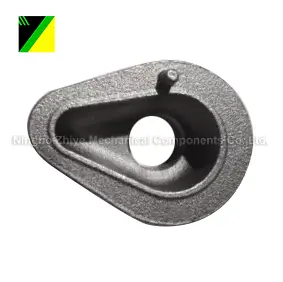
- English
- Español
- Português
- русский
- Français
- 日本語
- Deutsch
- tiếng Việt
- Italiano
- Nederlands
- ภาษาไทย
- Polski
- 한국어
- Svenska
- magyar
- Malay
- বাংলা ভাষার
- Dansk
- Suomi
- हिन्दी
- Pilipino
- Türkçe
- Gaeilge
- العربية
- Indonesia
- Norsk
- تمل
- český
- ελληνικά
- український
- Javanese
- فارسی
- தமிழ்
- తెలుగు
- नेपाली
- Burmese
- български
- ລາວ
- Latine
- Қазақша
- Euskal
- Azərbaycan
- Slovenský jazyk
- Македонски
- Lietuvos
- Eesti Keel
- Română
- Slovenski
- मराठी
- Srpski језик
What is the cause of casting deformation?
2025-01-16
Causes of deformation of machine tool castings: Prevent sudden changes in wall thickness. Machine tool castings with small and uniform wall thickness condense at the same time, and machine tool castings with large and uneven wall thickness condense from thin to thick in sequence, and the cold iron is placed reasonably. Slag holes are holes with irregular shapes inside or outside. The casting of castings should not be shortened during casting. Under the influence of the workbench heat source, the parts of the machine tool and bed castings will deform to varying degrees, thereby interrupting the relative movement between the workpiece and the tool, which is also the next quarter drop of the machine tool.

For dry CNC machine tools, since all processing is controlled by accounting instructions, the influence of thermal deformation is more serious. Before coating the machine tool, the bed should be cast and sounded, and the uneven appearance of the surface should be checked. Use things to trim, and the dirt outside should be clean. The pouring is continuous. The surface of the machine tool casting is sticky with sand, and it should be fully or partially covered with a mixture of metal (or metal oxide) and sand (or coating) or a layer of sintered sand. As a result, the appearance of our machine tool castings is relatively rough. Reduce the gap between sand particles. Appropriately reduce the pouring temperature of the metal. Refractory properties of progressive sand and core sand. After the bed casting is processed, it is cleaned or rinsed with metal cleaning agent or cleaning industrial gasoline to ensure the appearance of oil and other dirt. Continuous flow during pouring.
Strictly control the function of the molding sand and the molding operation, and pay attention to cleaning the mold cavity before closing the mold. Increase the temperature of the molten iron. Reduce the viscosity of the slag. Improve the slag blocking capacity of the advanced pouring system. Increase the fillet of the machine tool casting. Thermal cracks have penetrating or non-penetrating pear patterns on the machine or bed casting (note that they are mainly through the zigzag shape), and the metal and epidermal cells at the opening are oxidized. The wall thickness of the machine tool casting should be uniform as much as possible, and the compromise of the progressive molding sand and core should be improved.



